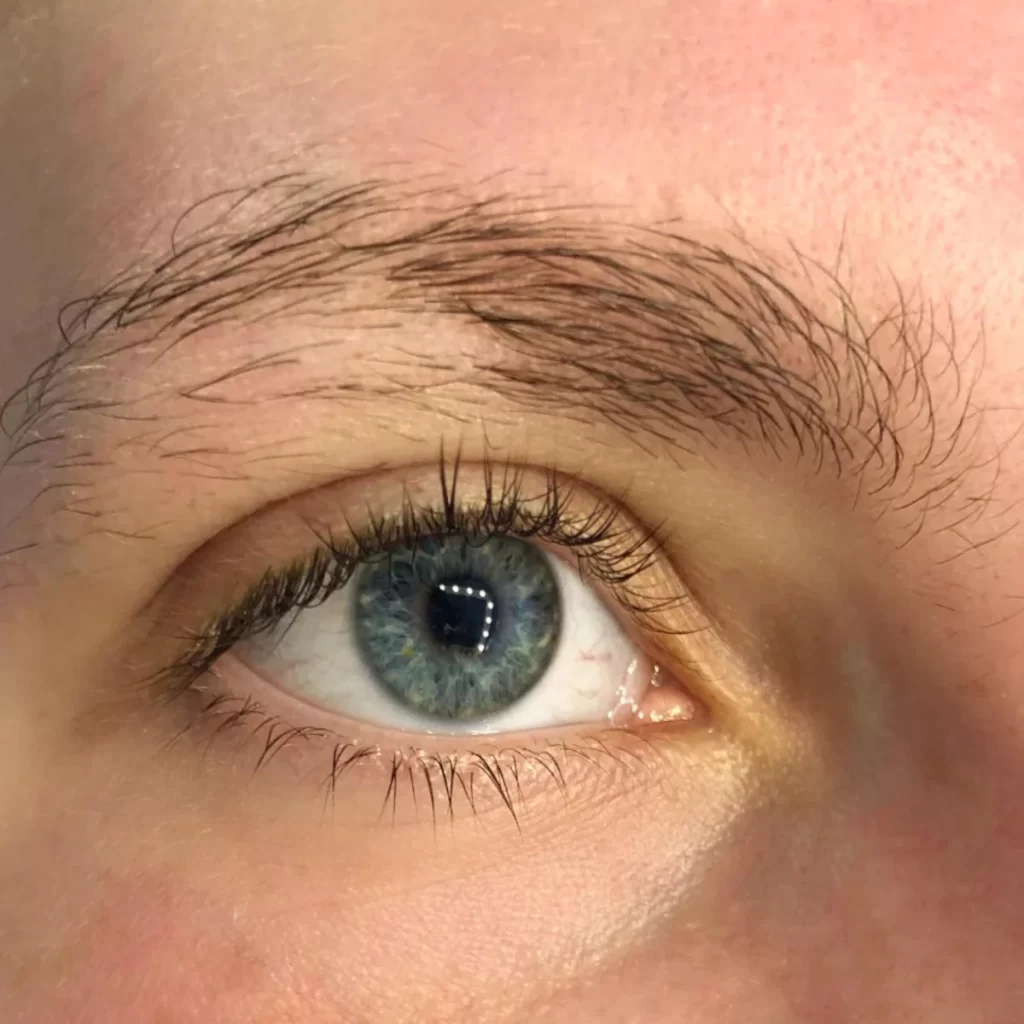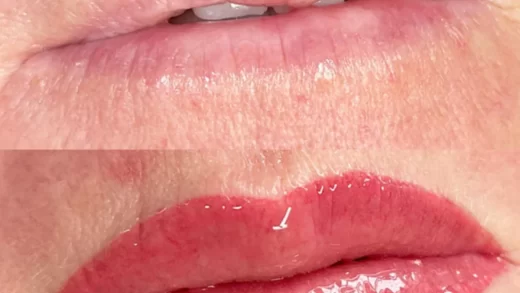Microblading eyebrows is a popular cosmetic procedure that enhances the appearance of eyebrows. While it offers benefits such as time-saving and long-lasting results, it is important for individuals considering microblading to be aware of potential risks.

This article offers a detailed examination of the potential risks associated with microblading, such as allergic reactions, infections, unsatisfactory results, complications during healing, maintenance issues, and scarring. It aims to provide a well-rounded perspective on the procedure, highlighting its benefits and possible drawbacks.
Information on Allergic Reactions and Preventative Measures
Microblading allergic reactions are caused by the pigments used in the procedure. These reactions, though uncommon, can vary from mild skin irritations to more severe responses like contact dermatitis. Symptoms may involve redness, itching, swelling, and discomfort in the treated area. Granuloma formation is a specific allergic reaction linked to tattoo pigments, and it is also used in microblading.
Granulomas are commonly formed when the body’s immune system reacts to foreign substances, such as tattoo pigment. This reaction can lead to small bumps or nodules, which may be unappealing and uncomfortable, especially in microbladed eyebrows.
Prevention and Mitigation:

The risk of an allergic reaction or the formation of granulomas cannot be completely eliminated, even with a patch test, as sensitivity may develop over time. However, some measures can be taken to reduce these risks.
- It is important to inform your microblading eyebrows practitioner of any known allergies before the procedure to ensure the materials’ safety.
- When choosing a professional, it is important to select someone who uses high-quality, hypoallergenic pigments. Reputable practitioners typically maintain better hygiene standards and use quality materials that can lower the risk of allergic reactions.
- A patch test is recommended before a microblading procedure to check for any potential allergic reactions to the pigments used.
- It is recommended that people become acquainted with FDA regulations regarding tattoo pigments, including those used in microblading, to better understand the substances used in microblading pigments.
In the event of an allergic reaction, it is important to promptly seek medical attention to address symptoms and prevent complications. Treatment for granulomas can vary based on size and severity, often involving topical or injected steroids.
Individual preparation for a microblading procedure involves recognizing potential risks, implementing necessary precautions, and ultimately leading to a safer and more satisfying experience.
Infections and methods of prevention.
Microblading is a procedure that involves making small incisions in the skin to implant pigment, which can potentially lead to infections. These infections can originate from two main sources: the procedure environment and post-procedure aftercare. By identifying and addressing these sources, the risk of infection can be greatly reduced.
Procedure Environment:
- It is important to have procedures performed in a sterile environment by a trained professional to minimize the risk of infections from bacteria and other pathogens.
- It is important to use sterilized tools and clean pigments during tattoo procedures to prevent infections caused by harmful bacteria entering the skin. Make sure your practitioner follows proper hygiene standards to ensure your safety.
Post-Procedure Aftercare:
- Proper aftercare is essential for the healing process of newly microbladed eyebrows. This includes following instructions such as avoiding swimming, excessive sweating, and exposure to non-sterile environments to promote safe healing and reduce the risk of infections.
- It is important to keep the treated area clean and avoid touching it with unclean hands to prevent infection.
Mitigating Risks:
- It is important to have a professional consultation before the procedure to discuss the steps taken by the practitioner to prevent infections and ensure adherence to industry-standard hygiene practices.
- Effective communication with the microblading professional is important. If you observe any signs of infection, such as increased redness, swelling, or pus, it is advisable to promptly inform the professional and seek medical attention if needed.
To reduce the risk of infections, it is important for individuals to ensure that their practitioners maintain proper hygiene standards during procedures and follow the recommended aftercare instructions. Adequate aftercare, which includes keeping the area clean, avoiding certain activities, and applying prescribed ointments, is crucial in preventing infections and promoting a successful healing process.
Scarring
Microblading, like any skin-penetrating procedure, comes with a small risk of scarring, especially for those with a history of keloids or hypertrophic scars.
Microblading is a less invasive technique than traditional tattooing, resulting in faster healing and a lower risk of scarring. However, risks are still involved, such as scarring if the technician goes too deep or if an infection occurs and is not treated promptly. Improper aftercare can also increase the risk of scarring.
Skin conditions like acne, psoriasis, or eczema can increase the risk of scarring during microblading, particularly if they are active in the eyebrow area. Consulting with a healthcare provider before getting microblading is important if you have a skin condition.
Repeated touch-up procedures on the same skin area during the microblading process can lead to scarring, which should be considered for long-term results.
For concerns regarding keloid scar potential or other skin-related issues, it is recommended to seek advice from a dermatologist or other qualified medical professional. While a microblading artist can offer general guidance and alert you to potential risks, they cannot provide medical advice.


